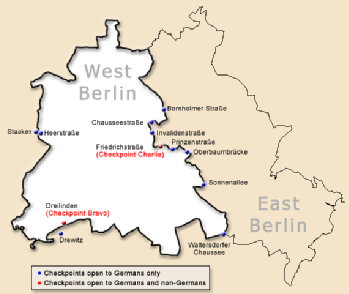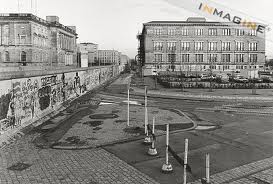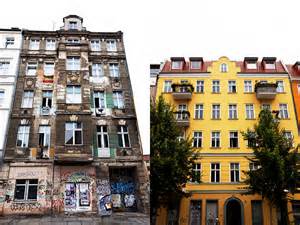A Geographical Analysis of Mieville's Novel
This page explores some of the geographical elements of Mieville's novel and relates them to real geographical scenarios that have occurred and are still occurring in the modern era.
The main geographical element of China Mieville’s The City and the City is the idea that two cities occupy the same geographical location and yet are considered as separate. Both Bezel and Ul Qoma exist in the same space. They constitute a divided yet joined entity. Their borders overlap and, geographically at least, the two cities mingle. However, for the citizens of these cities, making any form of contact with the other is treated as an act of ‘Breach’, something which is considered a serious crime. This conflicted urban location of Mieville’s novel allows him to effectively explore the experience of confusion and displacement that is commonly associated with modernity.
The Berlin Wall
The scenario depicted in Mieville’s novel in some ways mimics the one witnessed in Berlin during the Cold War. During this period, Berlin was split into East Berlin and West Berlin by the construction of the Berlin wall. The city, which had once been unified, now existed in two different countries. In The City and the City, it is revealed that both Bezel and Ul Qoma are built on ‘the same bones’ (p51). This idea is reflected in East and West Berlin. The two existed as separated entities, yet both had spawned from the bones of pre-1949 Berlin.
The wall that ran through the once unified city was by no means straight. It was a crooked construction. This meant that several areas of the two cities were almost enveloped by the other. A major example of this exists in the form of Kreuzberg. This district was situated next to the Berlin Wall. Like the central area of the Bezel-Ul Qoma hybrid, it formed an interspace between the separate cities. As a result, it was possible to live right next door to someone in a different city and even look straight into the eyes of a foreigner living in an adjacent building. Mieville captures this experience in his novel when Borlu comments on the fact that he can see Ul Qoman trains running outside his apartment.
‘Trains ran on raised line metres from my window… I could have stared into the carriages – they were quite that close – and caught the eyes of foreign travellers’ (p30).
Here, Mieville portrays the strange paradox of having physically proximity yet political separation from another human being. Similarly, if a person in Bezel wants to ‘go to a house physically next door to their own but in the neighbouring city… [they] cannot walk a few paces next door into an alter house without breach’ (p86). This scenario reflects the situation present in Kreuzberg – like Borlu, the citizens were physically separated from people living a mere one hundred metres away.

Gentrification
Gentrification is a geographical urban process that is occurring in many modern cities around the world. It involves the private regeneration of degenerate urban areas, most commonly in the inner city, by wealthier sectors of society. This can lead to the displacement of original, lower-class inhabitants. The displacement can lead to the feelings of isolation and confusion that are often associated with the concept of modernity.
An example of an area in which this process has occurred comes in the form of Notting Hill, London. In the 1950s, this area was considered deprived and was the centre of riots in 1958 and 1976. However, now, it is considered one of the most upmarket regions of London due to its gentrified state. This image displays how a decrepit building in Notting Hill has been enveloped by a new, gentrified exterior.
Beneath the glamourized exterior of the gentrified property is the shape of the original building. It still exists but is not acknowledged, much as the residents of Ul Qoma chose to unsee those in Bezel and vice versa.
There is evidence of this urban process within The City and the City. Mieville explores the concept of urban layering that is witnessed in gentrification, except he magnifies the issue to the layering of city upon city. The idea that one culture is being layered on top of, and therefore occupying the same space as, another is central to the novel. In the ‘foreign alter spaces’ (p26) between Bezel and Ul Qoma, there are ‘antique Besz stylings’ (p20) concealed below the deprivation of ‘inner-city slums’ (p11) and the ‘ruins of industry’ (p11). These ‘ruins are… incorporated [into the] antique foundations, into the substance of the city’ (p51). In turn, the ruins of Bezel are being consumed by ‘the shinier fronts of the elsewhere, the alter parts’ (p53) of Ul Qoma. The overlap of construction here mimics the modern process of gentrification.
The Globalised Clash of Cultures – World Cities
As the world globalises, the cultural diversity of many of its cities increases. The idea of two cultures existing in the same space that Melville explores is a central idea when regarding modernised global cities. Pockets of the East, for example, exist within many of the United Kingdom’s major cities. In London, for example, there are Pakistani communities existing beside Indian communities existing beside British communities and so forth. All proceed with their daily lives as isolated yet joined entities.
As Robert Hanks writes in a review of Mieville’s novel, in modern cities ‘communities are jammed together, cheek by jowl, yet completely separate: next-door neighbours may go to different supermarkets, drink in different bars, buy different clothes, watch different television programmes and if they pass on the street they don’t say hello. To walk anywhere in London is to enjoy a masterclass in unseeing, in failing to catch the other person’s eye in case they take it the wrong way or ask for money’ (Hanks, 2009).
Similarly, in The City and the City, Bezel and Ul Qoma exist directly next to each other yet in their areas of interaction purposely become unseen to each other. As Borlu says:
‘I unsaw it because it was in Ul Qoma’ (p94).
The City of Bezel is clearly associated with Europe. The names of its citizens, such as ‘Briamiv’, ‘Corwi’ and ‘Tyador Borlu’ are of Eastern European origin. In contrast, the names of the Ul Qomans, for example ‘Aikam’, ‘Tsueh’ and ‘Dhatt’, sound more like those that occur in the East. Therefore, it can be seen that Mieville’s exploration of the two overlapping yet separate cities mimics the experience of living in an area in which there are adjacent yet opposing cultural groups.
By Joanne Sarginson.
Works Cited
Mieville, China.The City and the City. Macmillan Publishers Limited, London, 2009.
Hanks, Robert. The City and the City by China Mieville: A Review. 15 June 2009. 20 May 2013.
<http://www.telegraph.co.uk/culture/books/bookreviews/5540368/The-City-and-the-City-by-China-Mieville-review.html>
